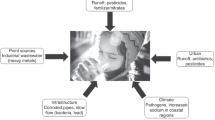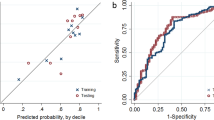Abstract
Disinfection by-products (DBPs) in drinking water may be associated with adverse pregnancy outcomes. However, the results from previous epidemiological studies are not consistent, perhaps in part due to individual variation in water use and consumption. This study was performed to evaluate and describe demographic and behavioral characteristics as predictors of ingested water, showering, bathing, and swimming among pregnant women. Water use and consumption data were collected through telephone interviews with 2297 pregnant women from three geographical sites in the southern United States. The data were analyzed according to demographic, health, and behavioral variables expected to be predictors of water use and thus potential confounding factors relating water use to pregnancy outcome. The candidate predictors were evaluated using backward elimination in regression models. Demographic variables tended to be more strongly predictive of the use and consumption of water than health and behavior-related factors. Non-Hispanic white women drank 0.4 (95% confidence interval (CI) 0.2; 0.7) liters more cold tap water per day than Hispanic women and 0.3 (95% CI 0.1; 0.4) liters more than non-Hispanic black women. Non-Hispanic white women also reported drinking a higher proportion of filtered tap water, whereas Hispanic women replaced more of their tap water with bottled water. Lower socioeconomic groups reported spending a longer time showering and bathing, but were less likely to use swimming pools. The results of this study should help researchers to anticipate and better control for confounding and misclassification in studies of exposure to DBPs and pregnancy outcomes.
This is a preview of subscription content, access via your institution
Access options
Subscribe to this journal
Receive 6 print issues and online access
$259.00 per year
only $43.17 per issue
Buy this article
- Purchase on Springer Link
- Instant access to full article PDF
Prices may be subject to local taxes which are calculated during checkout
Similar content being viewed by others
References
Aggazzotti G., Fantuzzi G., Tartoni P.L., and Predieri G . Plasma chloroform concentrations in swimmers using indoor swimming pools. Arch Environ Health 1990: 45: 175–179.
Barbone F., Valent F., Brussi V., Tomasella L., Triassi M., Di Lieto A., Scognamiglio G., Righi E., Fantuzzi G., Casolari L., and Aggazzotti G . Assessing the exposure of pregnant women to drinking water disinfection byproducts. Epidemiology 2002: 13: 540–544.
Bove F., Shim Y., and Zeitz P . Drinking water contaminants and adverse pregnancy outcomes: a review. Environ Health Perspect 2002: 110 (Suppl 1): 61–74.
Ershow A.G., Brown L.M., and Cantor K.P . Intake of tapwater and total water by pregnant and lactating women. Am J Public Health 1991: 81: 328–334.
Fenster L., Hubbard A.E., Swan S.H., Windham G.C., Waller K., Hiatt R.A., and Benowitz N . Caffeinated beverages, decaffeinated coffee, and spontaneous abortion. Epidemiology 1997: 8: 515–523.
Graves C.G., Matanoski G.M., and Tardiff R.G . Weight of evidence for an association between adverse reproductive and developmental effects and exposure to disinfection by-products: a critical review. Regul Toxicol Pharmacol 2001: 34: 103–124.
Institute of Medicine. Nutrition During Pregnancy. Part I, Weight Gain. National Academy Press, Washington, DC, 1990.
Jo W.K., Weisel C.P., and Lioy P.J . Routes of chloroform exposure and body burden from showering with chlorinated tap water. Risk Anal 1990: 10: 575–580.
Kaur S., Nieuwenhuijsen M.J., Ferrier H., and Steer P . Exposure of pregnant women to tap water related activities. Occup Environ Med 2004: 61: 454–460.
King W.D., Dodds L., Armson B.A., Allen A.C., Fell D.B., and Nimrod C . Exposure assessment in epidemiologic studies of adverse pregnancy outcomes and disinfection byproducts. J Expo Anal Environ Epidemiol 2004: 14: 466–472.
Lynberg M., Nuckols J.R., Langlois P., Ashley D., Singer P., Mendola P., Wilkes C., Krapfl H., Miles E., Speight V., Lin B., Small L., Miles A., Bonin M., Zeitz P., Tadkod A., Henry J., and Forrester M.B . Assessing exposure to disinfection by-products in women of reproductive age living in Corpus Christi, Texas, and Cobb county, Georgia: descriptive results and methods. Environ Health Perspect 2001: 109: 597–604.
Nieuwenhuijsen M.J., Northstone K., and Golding J . Swimming and birth weight. Epidemiology 2002: 13: 725–728.
Nieuwenhuijsen M.J., Toledano M.B., Eaton N.E., Fawell J., and Elliott P. Chlorination disinfection byproducts in water and their association with adverse reproductive outcomes: a review. Occup Environ Med 2000a: 57: 73–85.
Nieuwenhuijsen M.J., Toledano M.B., and Elliott P . Uptake of chlorination disinfection by-products; a review and a discussion of its implications for exposure assessment in epidemiological studies. J Expo Anal Environ Epidemiol 2000b: 10: 586–599.
Promislow J.H., Makarushka C.M., Gorman J.R., Howards P.P., Savitz D.A., and Hartmann K.E . Recruitment for a community-based study of early pregnancy: the Right From The Start study. Paediatr Perinat Epidemiol 2004: 18: 143–152.
Savitz D.A., Singer P.C., Hartmann K.E., Herring A.H., Weinberg H.S., Makarushka C., Hoffman C., Chan R., and Maclehose R. Drinking Water Disinfection By-Products and Pregnancy Outcome. AWWARF, Denver, CO, 2005: http://www.awwarf.org/research/TopicsAndProjects/execSum/2579.aspx.
Shimokura G.H., Savitz D.A., and Symanski E . Assessment of water use for estimating exposure to tap water contaminants. Environ Health Perspect 1998: 106: 55–59.
Starfield B., Shapiro S., Weiss J., Liang K.Y., Ra K., Paige D., and Wang X.B . Race, family income, and low birth weight. Am J Epidemiol 1991: 134: 1167–1174.
Villanueva C.M., Cantor K.P., Cordier S., Jaakkola J.J., King W.D., Lynch C.F., Porru S., and Kogevinas M . Disinfection byproducts and bladder cancer: a pooled analysis. Epidemiology 2004: 15: 357–367.
Weisel C.P., and Jo W.K . Ingestion, inhalation, and dermal exposures to chloroform and trichloroethene from tap water. Environ Health Perspect 1996: 104: 48–51.
Williams B.L., Florez Y., and Pettygrove S . Inter- and intra-ethnic variation in water intake, contact, and source estimates among Tucson residents: implications for exposure analysis. J Expo Anal Environ Epidemiol 2001: 11: 510–521.
Xu X., and Weisel C.P . Dermal uptake of chloroform and haloketones during bathing. J Expo Anal Environ Epidemiol 2005a: 15: 289–296.
Xu X., and Weisel C.P . Human respiratory uptake of chloroform and haloketones during showering. J Expo Anal Environ Epidemiol 2005b: 15: 6–16.
Zender R., Bachand A.M., and Reif J.S . Exposure to tap water during pregnancy. J Expo Anal Environ Epidemiol 2001: 11: 224–230.
Acknowledgements
This study was supported by a grant from the Swedish Council for Working Life and Social Research (Grant no. 2004-1546) and a Cooperative Agreement (#CR82455-01-0) between the University of North Carolina and US Environmental Protection Agency. We thank Yanfang Jiang, Department of Epidemiology, University of North Carolina for skillful data management and programming.
Author information
Authors and Affiliations
Corresponding author
Rights and permissions
About this article
Cite this article
Forssén, U., Herring, A., Savitz, D. et al. Predictors of use and consumption of public drinking water among pregnant women. J Expo Sci Environ Epidemiol 17, 159–169 (2007). https://doi.org/10.1038/sj.jes.7500488
Received:
Revised:
Accepted:
Published:
Issue Date:
DOI: https://doi.org/10.1038/sj.jes.7500488
Keywords
This article is cited by
-
Estimating drinking-water ingestion and dermal contact with water in a French population of pregnant women: the EDDS cohort study
Journal of Exposure Science & Environmental Epidemiology (2015)
-
Does area deprivation modify the association between exposure to a nitrate and low-dose atrazine metabolite mixture in drinking water and small for gestational age? A historic cohort study
Environmental Science and Pollution Research (2014)
-
Variability and predictors of changes in water use during pregnancy
Journal of Exposure Science & Environmental Epidemiology (2009)



